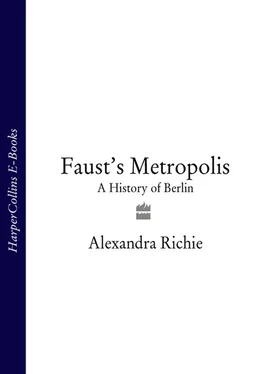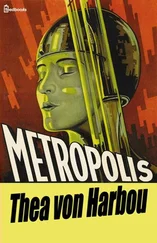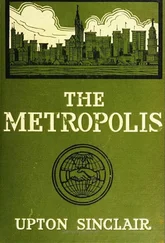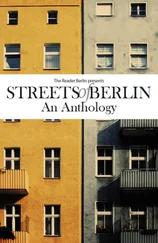The conflicts over official GDR monuments are merely one manifestation of the deep divisions which exist not only between different groups of eastern Germans, but also between the two halves of the city. Berlin will have to deal with many scars left over from the GDR regime – not least the ‘Wall in the Head’ phenomenon, in which the physical divisions are destroyed but the spiritual ones remain – in addition to the totally different approaches to culture, education and history experienced by two groups of Germans for half a century. 65But more important than debates over the Thälmann statue or the Palast der Republik is the question of how the most reprehensible aspects of the GDR should be remembered in the new Germany.
Many East Germans were stunned in 1989 to discover the extent to which they had been controlled, manipulated and impoverished by their own regime. The anger and sense of resentment amongst ordinary people grew as they began to uncover the truth about those who had created and maintained this grim system for so long, and the tens of thousands who had willingly cooperated by spying on friends, neighbours and colleagues. As the Wall was dismantled activists broke into the Stasi headquarters and began to examine the documents there and as the extent of spying was revealed it became painfully clear that Berliners had not lost their eagerness – so evident during the Nazi period – to inform on one another in the ‘interest of state security’. The revelations about the Stasi prompted the unprecedented opening of the files to all those people who appear in them and in 1991 a law was passed regulating their use. Today the records, which fill five miles of shelves, are kept in the former archive for the Ministry for State Security in the Normannenstrasse – known locally as the Gauck Authority after the East German clergyman who heads it. 66By 1997 over 1 million people had applied to read their personal files while nearly 2 million employers had asked for the vetting or ‘Gaucking’ of potential colleagues to see if they had collaborated with the Stasi. There have no doubt been painful revelations, unfair dismissals and abuses of the information contained in the files but exposure of the past was essential. Not only have the victims been able to find out the truth about what was done to them; those who made the conscious decision to spy in order to further their careers or obtain a car or travel abroad have also been unmasked. The opening of the files has helped to lay bare the terrible human cost of this deceit.
The Stasi files alone represent a powerful counter – argument to those Ostalgia advocates now trying to present the GDR as a harmless, bureaucratic and rather dull state. The files also record how security personnel committed brutal murders and imprisoned people without trial; it is now known that nearly 1 per cent of the population of the GDR, at least 100,000 people, died at the hands of the state. 67According to one former prisoner, Gunter Toepfer, people are now referring to the GDR as a place with plenty of kindergarten places and cheap train fares; it was in fact ‘a state which accepted death and extermination. Yet there has been a de facto amnesty.’ And, as David Rose and Anthony Glees have pointed out, thousands of those still free in East Berlin were ‘responsible for abductions, torture, and medical experiments on children’. 68Some courageous individuals like Harald Strunz have tried to help those who suffered under the regime; after being imprisoned by the East German government Strunz set up the League of Victims of Stalinism to help those who had been falsely accused of crimes. Gauck himself insists that rather than taking the easy path of nostalgia East Germans must confront difficult truths: ‘There can be no peace without confronting the past with honesty and maturity.’ 69Many Berliners argue that the Stasi headquarters should be kept open; that the Stasi security prison at Hohenschönhausen – the former meat factory where helpless prisoners were tortured in the dank ‘U – boat’ cells – should be turned into a museum; and that the remnants of the Wall – now all but gone from the city centre – should be preserved so that future generations can see what this incredible structure actually looked like. 70
Their task may prove difficult. None of the torturers who worked at Hohenschönhausen Prison has been brought to justice; indeed one former prisoner recently came across his erstwhile tormenter while trying to buy an insurance policy in western Berlin. In a 1994 opinion poll 57 per cent of former East Germans advocated closing the Stasi files. 71At the end of 1997 the federal police unit or Zerv, which is made up of 270 detectives charged with investigating Stasi crimes, shut down. On 1 January 1998 the statute of limitations comes into force, making it impossible to bring prosecutions for any offence except murder committed in the old East Germany. Manfred Kittlaus, Zeiv’s chief, has said that after that date ‘The majority of human rights violations will be beyond the law. The perpetrators will soon be free to walk down Unter den Linden with impunity.’ 72Many decent eastern Germans who resisted the regime felt betrayed when such brilliant self – publicists as Markus Wolf, who ruined innocent lives by recruiting women as ‘honey trap spies’, or Erich Mielke, who ordered the torture of civilians for having ‘dangerous’ religious beliefs, or Margot Honecker, who had the babies of politically ‘dubious’ parents stolen and given to good military couples, or Erich Honecker, who built the Wall, were all allowed to go free. Many believed that these people should have been brought to justice; once again, they felt, the spirit of the law in Germany had been trampled by the letter of the law. (It was some consolation that on 25 August 1997 Erich Honecker’s successor, Egon Krenz, was sentenced to six years’ imprisonment.) One way to integrate those who suffered under the Communist regime is to continue to fight the siren voices of those trying to rewrite its history, while supporting people like Gauck who reveal the truth about the oppressive nature of East Germany. 73
It is not surprising that the GDR was a grim place. How could it be otherwise, given that it was the product of the two most evil dictatorships in European history: the Third Reich and Stalin’s Soviet Union. It was a vassal of the Soviet Union, but it also retained many of the worst features of the previous regime. The crimes committed by the GDR were not remotely of the same magnitude as those committed by the Nazis, but the two regimes were joined by history and there were frightening continuities between them, not least that they employed similar propaganda methods and block warden systems to police entire districts of Berlin. 74Despite, or rather because of the Nazi legacy East Germans learned virtually nothing about the Third Reich; hence they feel no responsibility for it, and are for the most part still unaware of the links between Nazism and the regime under which they lived. This history should be documented in the new capital city, for understanding the Nazi period is one of the keys to understanding what happened in East Berlin under the GDR. But the need to face the Nazi past goes much deeper than that. The legacy of the years 1933 to 1945 still presents enormous problems for Berlin as a whole, and it is not an exaggeration to say that the way in which its citizens face the past will help to shape both the future of the capital and the very identity of the new Germany. And the rest of the world will be watching.
In an article written in July 1997 the British historian Andrew Roberts commented that in the preceding week he had come across a number of references both to Nazi Germany and the Second World War: the Swiss Bankers Association had published a list of accounts thought to contain gold belonging to Nazi victims; there were calls for Monaco and the Vatican to ‘come clean about the extent of their wartime financial relations with the Nazis’; there was a ‘row at Harvard over whether the new chair in Holocaust studies should be filled by Daniel Goldhagen, the controversial author of Hitler’s Willing Executioners ; while in Germany Volker Rühe swore to prosecute the soldiers of the 571 Mountain Combat Battalion who ‘made a video nasty of explicit viciousness and depravity during training which disgusted many Germans and evoked memories of war-time atrocities’; the Nuremberg city council was criticized for giving an honorary citizenship to Karl Diehl, aged ninety, whose company had used slave labour to build concentration camps and produce armaments in the war; and the sacking of Amnon Barzel, the Israeli curator of Berlin’s Jewish Museum, was denounced by the board of Berlin’s Jewish community as ‘bearing a tragic comparison with the dark times between 1933 and 1938’. As Roberts put it, ‘For those who thought that the celebrations marking the 50th anniversary of VE-Day somehow might have drawn a line under the Second World War, the events of last week must have been a grave disappointment. They prove how the scars of Hitler’s war are far from healed, and that the echoes of 1939–45 will stay with us long after the last veteran has gone off to join his comrades.’ Roberts was right – the Second World War is not going to go away. 75
Читать дальше












